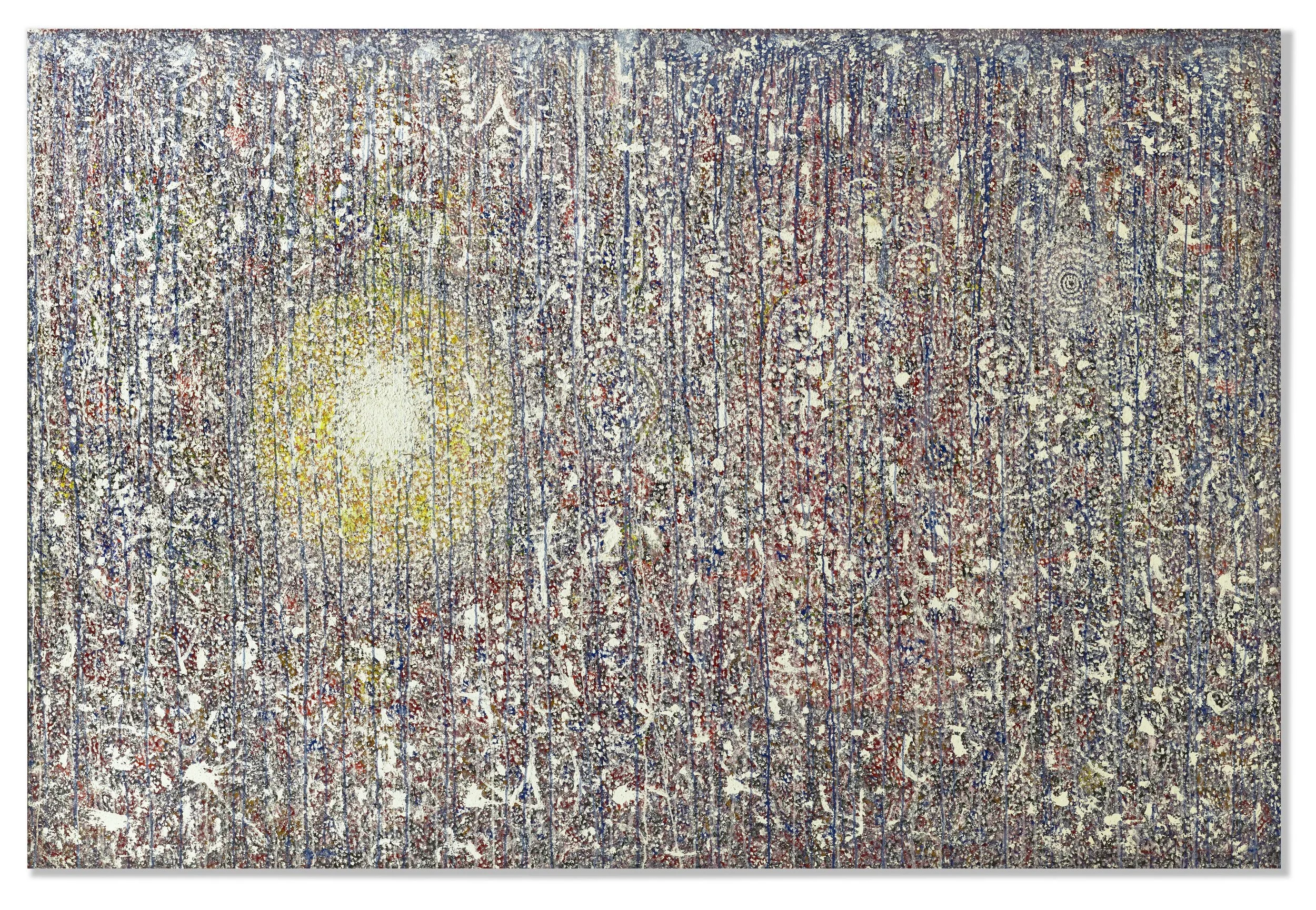New Acquisition Highlight.
Richard Pousette-Dart (1916-1992)
By the River, 1975
Oil on canvas
72 x 107 inches (182.9 x 271.8 cm.)
“Art is always mystical in its final meaning” - Richard Pousette-Dart
At the center of my art advisory practice is research. I focus on not only recognizing what is universally considered of quality but also by mining art history for what opportunities may be hiding in plain sight. Richard Pousette-Dart’s “By the River” (1974), one of my recent acquisitions, is one of those artists that can be easily overlooked simply because he is not as famous as his counterparts. But one needs to look no further than the artist’s CV to get a sense of what can only be defined as an opportunity for collectors. His resume is arguably as good as it gets. It includes multiple solo exhibitions at the Whitney (1963, 1974, 1998) as well as solo shows at MOMA (1969); The Met (1997); and both the Guggenheim in New York and the Peggy Guggenheim Collection in Venice (2007); inclusion in the Biennale de Venezia (1982), The Whitney Biennial (1973), the Bienal do São Paulo (1961) and Documenta (1959); as well as representation by Pace.
His work, however, is enigmatic–a complex combination of the ethereal, inner light, outer light, the edge, the center, the hand, the land, the mind, and the universe. They are both representational and abstract. As such, his paintings seem to shrug off any notion of categorization altogether. The thickly impastoed surfaces of his 1970s canvases like “By the River” draw a diverse map of art historical dotted lines to Impressionist landscapes, the hieroglyphic aesthetic of 1940s pre-drip Pollocks and the celestial quality of Geometric Abstraction. And, yet, it's very clear where he comes from. Pousette-Dart is one of the founding members of Abstract Expressionism and is so rooted in the AbEx movement, in fact, you can find him seated in the legendary “The Irascibles” (1950) photograph from LIFE magazine by Nina Leen alongside those aforementioned counterparts Willem de Koooing, Jackson Pollock and Mark Rothko. Critic Lucy Lippard wrote:
“Pousette-Dart’s ubiquitous focused-unfocused technique implies a more expansive space than is actually pictured, throwing one’s view of the surface off and then reorienting it on another level, in another place. The same effect is produced by a center which is actually off-center, but is so subtly a center in itself, despite its placement, that it mysteriously remains a center…”
And so this indeterminable quality of his practice paradoxically makes him important within the art community but has made him not-quite-as-famous as his counterparts because he doesn’t fit neatly into one movement. But “if you know, you know” as the saying goes. And what is certain is that from a collection-building perspective, a great Pousette-Dart presents the aforementioned opportunity–an opportunity to add something important to a collection but also a bit of curatorial “street-cred”. “By the River” in its new home provides just that. It will be sitting comfortably among many of the foremost names of Abstract Expressionism (Helen Frankenthaler, Joan Mitchell, Hans Hofmann etc) but will also be a dynamic addition–something “well-chosen.” From a market perspective there is much to consider here too. There is room to grow for Pousette-Dart as the notoriety of his practice has the potential to grow leaps and bounds not only in the US but also in Asia and Europe where he is underrepresented in public collections. And so time will tell but I like this acquisition a lot for not only where it sits now in the market but also for the potential it presents.


